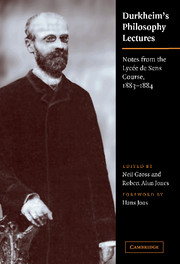Book contents
- Frontmatter
- Contents
- Foreword
- Translators' Note
- Acknowledgments
- Introduction
- Part I Preliminary Matters
- Part II Psychology
- Part III Logic
- 38 Introduction. On Logic
- 39 On Truth. On Certainty
- 40 On Certainty (Conclusion)
- 41 On False Certainty or Error
- 42 Skepticism
- 43 Ideas. Terms. Judgments. Propositions
- 44 Definition
- 45 On the Syllogism
- 46 On Induction
- 47 Fallacies
- 48 On Method
- 49 Method in the Mathematical Sciences
- 50 The Methodology of the Physical Sciences
- 51 Method in the Natural Sciences
- 52 Method in the Moral Sciences
- 53 Method in the Historical Sciences
- 54 Language
- Part IV Ethics
- Part V Metaphysics
- Appendix: Biographical Glossary
- Index
39 - On Truth. On Certainty
Published online by Cambridge University Press: 21 October 2009
- Frontmatter
- Contents
- Foreword
- Translators' Note
- Acknowledgments
- Introduction
- Part I Preliminary Matters
- Part II Psychology
- Part III Logic
- 38 Introduction. On Logic
- 39 On Truth. On Certainty
- 40 On Certainty (Conclusion)
- 41 On False Certainty or Error
- 42 Skepticism
- 43 Ideas. Terms. Judgments. Propositions
- 44 Definition
- 45 On the Syllogism
- 46 On Induction
- 47 Fallacies
- 48 On Method
- 49 Method in the Mathematical Sciences
- 50 The Methodology of the Physical Sciences
- 51 Method in the Natural Sciences
- 52 Method in the Moral Sciences
- 53 Method in the Historical Sciences
- 54 Language
- Part IV Ethics
- Part V Metaphysics
- Appendix: Biographical Glossary
- Index
Summary
Truth is the conformity of the mind and things. When the mind is adequate to things (as the expression goes), it possesses truth. Certainty is the state of a mind that knows it possesses truth, the effect of truth on the self. The opposite of certainty is not ignorance (whose opposite is science) but doubt, the state of a mind that feels itself not in possession of truth.
The main question about certainty is: “What brings it about?” The immediate answer is: “Truth.” And since truth brings about certainty, there must be a sign that allows us to determine what's true. This sign – the real cause of certainty – is called “the criterion of truth.”
What is this criterion?
Many philosophers answer that it's evidence, something objective that clearly distinguishes truth from falsity. Descartes argued that there's a kind of light intrinsic to truth and that this light illuminates the mind. This is why the theory of objective evidence has often been attributed to Descartes; but he understood evidence differently than we do. For him, evidence is produced only if the will directs our understanding in an appropriate way, which isn't the same as relying entirely on a sign outside the mind. The theory of objective evidence should actually be traced back to Spinoza (Verum index sui [truth the index of itself]).
But this theory can't explain differences of opinion. If evidence were objective, the judgments of all men would always concur, while in fact there are many controversial propositions.
- Type
- Chapter
- Information
- Durkheim's Philosophy LecturesNotes from the Lycée de Sens Course, 1883–1884, pp. 172 - 174Publisher: Cambridge University PressPrint publication year: 2004



